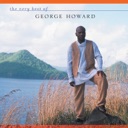Smooth Jazz
Wayman Tisdale and Dave Koz at the Dave Koz & Friends Smooth Jazz Cruise, 2006
Flickr mjurn - Dave Koz & Wayman Tisdale, CC BY 2.0Key Attributes of Smooth Jazz
Select to filter timelineThemes
- Love/Relationships
Musical Features
- Ballad
- Groove
- Syncopation
- Repetition
- Vocals
- Instrumentals
Instruments
- Bass
- Drums
- Trumpet
- Saxophone
The term smooth jazz is best understood as a marketing label that symbolizes the commercialization of jazz as popular music. An outgrowth of soul jazz (1960s) and jazz fusion (1970s), smooth jazz arose and gained prominence in the late 1980s when record labels experimented with new approaches to further expand the audience for jazz. Smooth jazz artists draw inspiration and repertoire from easy listening pop music and R&B ballads. Influenced by the jazz fusion styles of trumpeter Miles Davis, pianist Herbie Hancock, guitarist George Benson, and saxophonists Grover Washington, Jr., and David Sanborn, smooth jazz musicians Gerald Albright, Najee, Kenny G, Boney James, George Howard, Dave Koz, and Norman Brown are among the popularizers of this style.
Context and History
“It [Najee’s Theme] was really an R&B record using the sax as a voice. That was a great decision from a marketing standpoint. It was an R&B audience that established me. It converted over to jazz later. The world called it jazz then, but in my mind it was R&B.”Najee
“I started [recording] definitely being a copycat. That’s the way it was. I mean, I wanted to be the white Grover Washington, Junior, and I think I became the white Grover Washington, Junior. Then when I started to hear other saxophone players, like Sonny Rollins or Coltrane, I heard this different way of playing. . . I thought, “Well, I’ve got to learn these licks.” And pretty soon, after years of practicing this and practicing that, at some point I decided that my own style emerged, and I play the way that I play.”Kenny G.
Profiting from the crossover success of jazz fusion in the 1970s, record labels sought ways to keep jazz relevant, especially given the growing popularity of R&B and hip-hop in the mainstream. Producers began recording jazz artists performing covers of popular R&B songs, such as Norman Brown’s cover of Janet Jackson’s “That’s the Way Love Goes” (1994) and George Howard’s cover of Patti Austin and James Ingram’s “Baby, Come to Me” (1992).
These artists also perform original songs modeled on the relaxed beat of easy listening pop songs and R&B ballads, such as Boney James’s “It’s All Good” (1997), as well as songs with an R&B groove, as heard in George Howard’s “Red, Black ‘N’ Blue” (2000) and the Yellowjackets’ Shades (1986). Smooth jazz musicians collaborated with R&B vocalists, as Kenny G did with Lenny Williams on “Don’t Make Me Wait for Love” (1986). Many also tour with and play on studio recordings of R&B and pop artists.
The emergence of alternative radio formats such as “adult alternative,” ”easy listening” and their spin-offs “urban contemporary adult,” “smooth jazz” and “quiet storm” made possible the continued air-play of smooth jazz artists, although jazz purists do not consider these musicians to be representative of the jazz tradition.
Musical Features/Performance Style
Smooth jazz musicians borrow musical elements from R&B. Songs, for example, center on a “groove” (a syncopated and repetitive foundation established by the bass and drum), and they often feature lead and/or background vocals. Improvisation is de-emphasized, although some smooth jazz artists occasionally incorporate the blues and the improvisational style of traditional jazz—for example, David Sanborn on Another Hand (1991) and Closer (2005), and Fourplay on Between the Sheets (1993).
Vocalists
R&B vocalists such as Lenny Williams, Eric Benet, Heather Headley, and Phil Perry have appeared on smooth jazz recordings as guest performers. Jazz-oriented R&B singers, including Al Jarreau, Anita Baker, and Sade are programmed on easy listening, contemporary adult, smooth jazz, and quiet storm radio formats.
Bibliography
- Mills, Ted. “The Strange History of Smooth Jazz: The Music We All Know and Love…to Hate.” Open Culture. December 7, 2018. http://www.openculture.com/2018/12/the-strange-history-of-smooth-jazz.html












